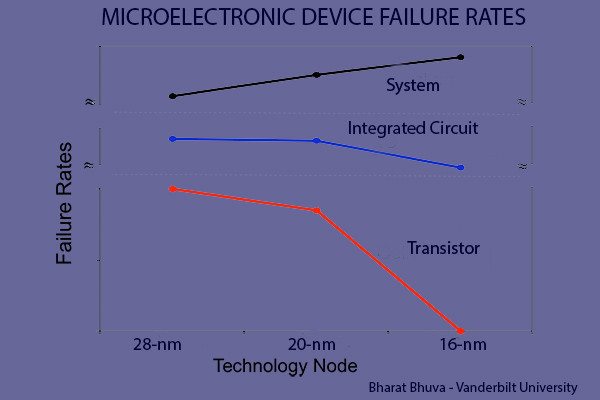Why does my phone keep freezing? Cosmic rays could be to blame for crashing computers
Theory suggests energised particles from outer space can change data on electrical circuits.

Next time your smartphone or computer crashes, cosmic rays could be to blame. A new theory suggests that radioactive particles from outer space can interfere with electrical circuits and cause them to fail, and could explain why smartphones, laptops and other devices sometimes crash with no obvious explanation.
Cosmic rays are highly energised particles that travel through space close to the speed of light. When these crash into the Earth's atmosphere they shower the planet with ionised particles and electromagnetic radiation including protons, neutrons, electrons and gamma rays.
While these are harmless to living organisms, a study by Vanderbilt University in Nashville, US, claims that some particles carry enough energy to alter data contained in the microprocessors of electronic systems, in a phenomenon known as a single-event upset (SEU).
During SEUs, energised particles can change individual bits of data stored in a computer's RAM, such as changing a binary 1 to a 0 and vice-versa. This is known as bit-flipping.
The phenomenon could explain why smartphones and computers sometimes crash and reboot for no apparent reason, researchers claim. What's more, researchers believe the problem could get worse as electronics become more advanced.
Bharat Bhuva, professor of electrical engineering at Vanderbilt University, said: "This is a really big problem, but it is mostly invisible to the public. The semiconductor manufacturers are very concerned about this problem because it is getting more serious as the size of the transistors in computer chips shrink and the power and capacity of our digital systems increase.
"In addition, microelectronic circuits are everywhere and our society is becoming increasingly dependent on them."
While a single bit-flip is usually harmless, in certain scenarios they can be catastrophic. In 2008, the avionics system of a Qantas A330 appeared to suffer an SEU that caused the autopilot to disengage and the plane to dive 690 feet in 23 seconds. Several passengers were injured and the pilots were forced to make an unscheduled landing.
Scientists believe that SEUs could be the cause behind similar unexplained glitches in aircraft electronics, which are particularly susceptible when flying at 35,000 where radiation levels are higher.
A bit-flip was also blamed when an electronic voting machine added more than 4,000 extra votes to a candidate in the town of Schaerbeek, Belgium, in 2003. The error was only detected because it gave the candidate more votes than were possible; a single bit flip in the machine's register was eventually fingered as the culprit.
Circuit training
To test the theory of whether the problem is getting worse, the Vanderbilt researchers took several generations of transistors and blasted them with a neutron beam, used to replicate cosmic rays. They then measured how many SEUs the chips experienced.

As transistor sizes have shrunk from 28-nanometre to 20-nm and finally to 16-nm, they require less electrical charge to make up one bit of information, and therefore less charge to cause a bit-flip. This means that the likelihood that one bit will flip when struck by an energetic particle has increased.
"Our study confirms that this is a serious and growing problem," said Bhuva."This did not come as a surprise. Through our research on radiation effects on electronic circuits developed for military and space applications, we have been anticipating such effects on electronic systems operating in the terrestrial environment."
However, the researchers found that the move from 2D to 3D architecture has helped circuits become more resilient against SEUs overall. Additionally, with chips shrinking in size with each generation, they're becoming harder targets for particles to strike.
While it's not practical to build physical shields against SEUs (it would take more than 10 feet of concrete to keep a circuit safe from neutrons, the researchers claimed), computer chips can be designed in a way that makes them dramatically less vulnerable.
This involves creating duplicate circuits in a system that perform the same task, an approach already adopted by the likes of NASA and now being addressed by the aviation, medical equipment, IT, transportation and communications industries.
"The probability that SEUs will occur in two of the circuits at the same time is vanishingly small. So if two circuits produce the same result it should be correct," said Bhuva. "This is a major problem for industry and engineers, but it isn't something that members of the general public need to worry much about."
© Copyright IBTimes 2024. All rights reserved.























